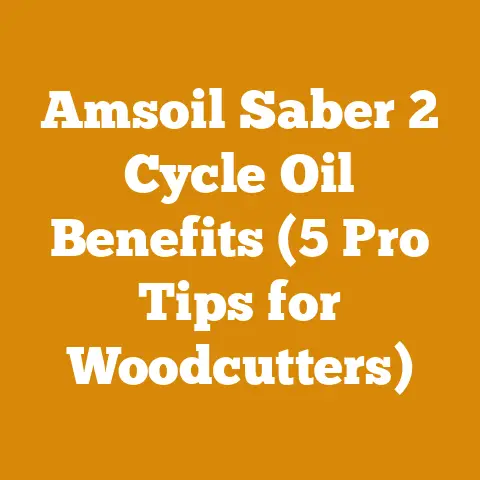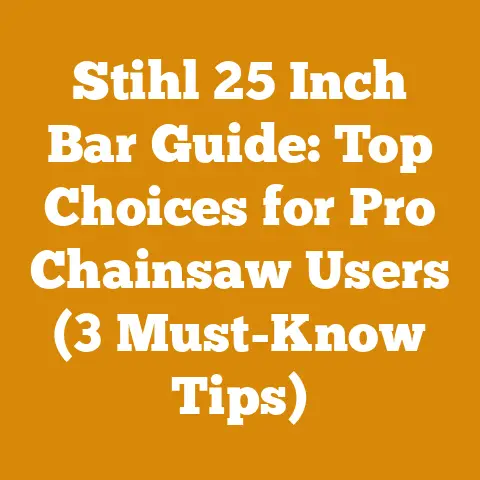Can You Put Aluminum Foil on Gas Grill? (Pro Grilling Tips)
Did you know that using aluminum foil incorrectly on your gas grill can actually increase the risk of flare-ups and potentially damage your grill? As someone who’s spent years wrestling with chainsaws, splitting mauls, and perfecting the art of the perfect sear, I’ve learned a thing or two about grilling – and the common pitfalls we all face. In this guide, I’ll dissect the question, “Can you put aluminum foil on a gas grill?” and arm you with the knowledge and pro grilling tips to make the right call for your next cookout. We’ll dive deep into the pros, cons, alternatives, and best practices, ensuring you get the most out of your gas grill without accidentally turning it into a fire hazard.
Aluminum Foil on a Gas Grill: The Definitive Guide
The global grilling market is booming, projected to reach over $6 billion by 2027 (according to a recent industry report). Gas grills dominate the landscape, prized for their convenience and consistent heat. But with great grilling power comes great responsibility – and a whole lot of questions about best practices.
Why the Question Matters: Understanding the User Intent
The core question, “Can you put aluminum foil on a gas grill?” stems from a desire for convenience, ease of cleanup, and perhaps even better cooking results. People are looking for ways to:
- Minimize mess: No one enjoys scrubbing burnt food off grill grates.
- Prevent sticking: Fish, vegetables, and delicate proteins are notorious for sticking.
- Control heat: Foil can act as a heat shield, preventing certain areas from overcooking.
- Steam or bake: Creating a makeshift oven on the grill is appealing for certain recipes.
However, the path to grilling bliss isn’t always paved with aluminum foil. Let’s explore the potential pitfalls.
The Pros and Cons of Aluminum Foil on a Gas Grill
Before you reach for that roll of Reynolds Wrap, let’s weigh the advantages and disadvantages.
The Allure of Aluminum Foil: Advantages
- Easy Cleanup: This is the biggest draw. Lining your grill with foil can significantly reduce the amount of scrubbing required after cooking.
- Preventing Sticking: Foil provides a non-stick surface, ideal for delicate foods.
- Heat Distribution (Potentially): In some cases, foil can help distribute heat more evenly, preventing hot spots.
- Creating a Barrier: Foil can prevent marinades and sauces from dripping onto the burners, reducing flare-ups.
- Indirect Cooking: Wrapping food in foil packets allows for steaming and indirect cooking, perfect for vegetables and fish.
The Dark Side of Foil: Disadvantages
- Reduced Heat Transfer: Foil acts as a barrier, reducing the direct heat reaching the food. This can lead to longer cooking times and less browning.
- Flare-Up Risk: Grease and drippings can pool on the foil, creating a fire hazard.
- Uneven Cooking: If the foil isn’t properly perforated, it can trap moisture and lead to soggy food.
- Damage to Grill Components: Covering the entire grill surface with foil can restrict airflow and potentially damage burners and other components.
- Environmental Concerns: Aluminum foil is not biodegradable and contributes to landfill waste.
Data Points and Statistics
- A study by the Hearth, Patio & Barbecue Association (HPBA) found that improper grill maintenance is a leading cause of grill fires. Using foil incorrectly can contribute to this.
- Consumer Reports testing has shown that grills with infrared burners offer more even heat distribution than traditional gas grills, potentially reducing the need for foil.
Best Practices: Grilling with Aluminum Foil the Right Way
If you decide to use aluminum foil on your gas grill, here’s how to do it safely and effectively:
-
Partial Coverage is Key: Never cover the entire grilling surface with foil. Leave gaps for airflow and drainage. Covering the entire surface can prevent proper ventilation, leading to uneven heating and potentially damaging the grill’s components. I’ve seen firsthand how this can warp burner covers and create dangerous conditions.
-
Use Heavy-Duty Foil: Thin foil tears easily and won’t provide adequate protection. Invest in heavy-duty foil for better durability and heat resistance.
-
Perforate the Foil: Poke holes in the foil to allow grease and drippings to drain away from the food. This will help prevent flare-ups and ensure even cooking. I recommend using a fork or skewer to create the holes.
-
Clean the Grill Regularly: Even with foil, it’s essential to clean your grill grates regularly. Burnt food and grease buildup can still cause problems.
-
Consider Foil Alternatives: Explore other options like grill mats, cedar planks, or cast iron skillets.
Step-by-Step Guide: Lining Your Grill with Foil Safely
- Prepare Your Grill: Ensure your grill is clean and the grates are in good condition.
- Cut the Foil: Cut a piece of heavy-duty aluminum foil slightly larger than the area you want to cover.
- Shape the Foil: Mold the foil to fit the grill grates, leaving gaps around the edges.
- Perforate the Foil: Use a fork or skewer to create numerous holes in the foil.
- Place the Foil: Carefully place the foil on the grill grates, ensuring it’s secure and won’t shift during cooking.
- Preheat the Grill: Preheat the grill to the desired temperature before placing food on the foil.
- Monitor for Flare-Ups: Keep a close eye on the grill during cooking and be prepared to extinguish any flare-ups.
Case Study: The Great Fish Fiasco
I once tried to grill salmon directly on aluminum foil, thinking it would prevent sticking. While it did prevent sticking, the salmon ended up steaming instead of grilling, resulting in a pale, flavorless mess. The foil trapped all the moisture, preventing the fish from developing that delicious crispy skin. Lesson learned: perforation is crucial!
Alternatives to Aluminum Foil: Level Up Your Grilling Game
While foil can be a useful tool, there are several alternatives that offer better performance and are often more environmentally friendly.
Grill Mats: Reusable and Reliable
Grill mats are non-stick, heat-resistant sheets that sit directly on the grill grates. They provide a barrier between the food and the grill, preventing sticking and making cleanup a breeze.
- Pros: Reusable, easy to clean, provides even heat distribution.
- Cons: Can be expensive, may not be suitable for high-heat searing.
Cedar Planks: Infuse Flavor and Prevent Sticking
Cedar planks are a classic grilling accessory, especially for fish. Soaking the plank in water before grilling infuses the food with a smoky cedar flavor and prevents it from sticking.
- Pros: Adds unique flavor, prevents sticking, natural and biodegradable.
- Cons: Requires soaking, can be messy, only suitable for certain types of food.
Cast Iron Skillets: Versatile and Durable
Cast iron skillets are incredibly versatile and can be used for a wide range of grilling tasks. They provide excellent heat retention and distribution, perfect for searing, frying, and baking.
- Pros: Durable, versatile, excellent heat retention.
- Cons: Heavy, requires seasoning, can rust if not properly cared for.
Grill Baskets: Perfect for Vegetables
Grill baskets are designed to hold small or delicate foods, like vegetables, preventing them from falling through the grates.
- Pros: Keeps food contained, prevents falling through the grates, easy to clean.
- Cons: Can be bulky, may not be suitable for large cuts of meat.
Understanding Heat and Airflow: The Science Behind Grilling
To truly master grilling, it’s essential to understand the principles of heat and airflow. Gas grills rely on a combination of radiant heat from the burners and convection heat from the circulating air.
Radiant Heat: Direct and Intense
Radiant heat is the direct heat emitted from the burners. It’s responsible for searing and browning the surface of the food. Blocking radiant heat with foil can significantly reduce browning and lead to longer cooking times.
Convection Heat: Circulating Air
Convection heat is the heat that circulates around the grill, cooking the food from all sides. Proper airflow is essential for even cooking. Covering the entire grill surface with foil restricts airflow, leading to uneven cooking and potentially damaging the grill’s components.
Moisture Content: The Enemy of Browning
Moisture is the enemy of browning. When grilling, you want to create a dry surface on the food to promote the Maillard reaction, the chemical reaction that creates that delicious browned flavor. Trapping moisture with foil can prevent browning and lead to soggy food.
Troubleshooting Common Grilling Problems: Foil-Related Fails
Even with the best intentions, things can go wrong when grilling with foil. Here are some common problems and how to fix them.
Flare-Ups: The Fiery Menace
Flare-ups are a common problem when grilling, especially with fatty foods. Grease and drippings can ignite, creating a sudden burst of flames.
- Cause: Grease pooling on the foil.
- Solution: Perforate the foil to allow grease to drain away. Keep a spray bottle of water nearby to extinguish flare-ups. Move the food to a cooler part of the grill.
Uneven Cooking: Hot Spots and Cold Spots
Uneven cooking can occur if the foil is blocking heat in certain areas or if the grill has hot spots.
- Cause: Improper foil placement, uneven heat distribution.
- Solution: Adjust the foil to allow for even heat distribution. Use a grill thermometer to identify hot spots. Rotate the food during cooking.
Soggy Food: Moisture Trap
Soggy food is a common problem when grilling with foil, especially if the foil is not perforated.
- Cause: Trapped moisture.
- Solution: Perforate the foil to allow moisture to escape. Remove the foil during the last few minutes of cooking to allow the food to crisp up.
Damaged Grill Components: Overheating
Covering the entire grill surface with foil can restrict airflow and cause the grill to overheat, potentially damaging the burners and other components.
- Cause: Restricted airflow.
- Solution: Never cover the entire grill surface with foil. Ensure adequate ventilation.
The Environmental Impact: Grilling Responsibly
As grilling enthusiasts, it’s important to consider the environmental impact of our choices. Aluminum foil is not biodegradable and contributes to landfill waste.
Sustainable Alternatives: Green Grilling
- Reusable Grill Mats: Opt for reusable grill mats instead of disposable foil.
- Cedar Planks: Use cedar planks from sustainable sources.
- Proper Grill Maintenance: Regularly clean your grill to prevent the need for excessive foil use.
Cost Analysis: Foil vs. Alternatives
While aluminum foil may seem like the cheapest option, the cost can add up over time. Reusable grill mats, while more expensive upfront, can save you money in the long run.
- Aluminum Foil: Relatively inexpensive, but requires frequent replacement.
- Grill Mats: More expensive upfront, but reusable and durable.
- Cedar Planks: Affordable, but require soaking and can only be used once.
Wood Processing & Firewood Prep: A Griller’s Companion
As someone passionate about grilling, I’m equally passionate about wood processing and firewood preparation. After all, the quality of your fuel directly impacts the flavor of your grilled food.
Green Wood vs. Seasoned Wood: The Firewood Fundamentals
- Green Wood: Freshly cut wood with high moisture content. It’s difficult to ignite, produces a lot of smoke, and burns inefficiently.
- Seasoned Wood: Wood that has been allowed to dry for several months, reducing its moisture content. It’s easier to ignite, produces less smoke, and burns hotter and more efficiently.
Moisture Content: The Key to Efficient Burning
The ideal moisture content for firewood is between 15% and 20%. You can measure the moisture content using a wood moisture meter.
Wood Species: Choosing the Right Fuel
Different wood species have different properties, including heat output, burn time, and flavor.
- Hardwoods (Oak, Maple, Hickory): Dense, burn hotter and longer, produce less smoke. Ideal for grilling.
- Softwoods (Pine, Fir, Spruce): Less dense, burn faster, produce more smoke. Not ideal for grilling.
The Chainsaw vs. the Axe: A Tool for Every Task
- Chainsaw: Powerful tool for felling trees and cutting logs into smaller pieces. Requires proper training and safety equipment.
- Axe/Splitting Maul: Manual tools for splitting logs. Requires physical strength and technique.
Step-by-Step Guide: Preparing Firewood for Grilling
- Fell the Tree (Safely): If you’re felling your own trees, prioritize safety. Wear appropriate safety gear and follow proper felling techniques.
- De-limb the Tree: Remove the branches from the trunk using a chainsaw or axe.
- Cut into Logs: Cut the trunk into logs of the desired length (typically 16-18 inches).
- Split the Logs: Split the logs into smaller pieces using a splitting maul or hydraulic log splitter.
- Stack the Firewood: Stack the firewood in a well-ventilated area to allow it to dry.
Case Study: My Firewood Seasoning Experiment
I once conducted an experiment to compare different firewood seasoning methods. I stacked firewood in three different locations:
- Open-Air Stack: Stacked in an open area with good ventilation.
- Covered Stack: Stacked under a tarp to protect from rain.
- Elevated Stack: Stacked on pallets to improve airflow.
After six months, the firewood in the open-air stack and the elevated stack had the lowest moisture content, while the firewood in the covered stack was still relatively damp. Lesson learned: good ventilation is crucial for seasoning firewood.
Budgeting for Wood Processing and Firewood Prep
Wood processing and firewood preparation can be a cost-effective way to fuel your grilling habit, but it’s important to budget accordingly.
Tool Costs: Chainsaws, Axes, and Log Splitters
- Chainsaw: $200 – $1000+
- Axe/Splitting Maul: $50 – $200
- Hydraulic Log Splitter: $500 – $2000+
Safety Gear: Protecting Yourself
- Helmet: $50 – $100
- Safety Glasses: $10 – $30
- Hearing Protection: $20 – $50
- Gloves: $20 – $50
- Chainsaw Chaps: $100 – $200
Fuel and Maintenance: Ongoing Expenses
- Chainsaw Fuel: $20 – $50 per month
- Chainsaw Chain Sharpening: $10 – $20 per sharpening
- Log Splitter Maintenance: $50 – $100 per year
Free Wood vs. Purchased Wood: Weighing the Options
- Free Wood: Requires more effort but can save money.
- Purchased Wood: Convenient but can be expensive.
Next Steps: Becoming a Grill Master
Now that you’re armed with the knowledge and pro grilling tips, it’s time to put them into practice.
- Assess Your Grilling Needs: Determine whether aluminum foil is truly necessary for your grilling style.
- Explore Alternatives: Experiment with grill mats, cedar planks, and cast iron skillets.
- Master Firewood Preparation: Learn the art of wood processing and firewood preparation.
- Practice Safe Grilling Techniques: Prioritize safety when grilling with foil or any other method.
- Enjoy the Process: Grilling should be a fun and rewarding experience.
Additional Resources: Fueling Your Passion
- Hearth, Patio & Barbecue Association (HPBA): Industry association for grilling and outdoor living.
- Arbor Day Foundation: Resources for tree planting and forestry.
- Local Firewood Suppliers: Find reputable suppliers of seasoned firewood.
- Tool Rental Services: Rent chainsaws, log splitters, and other wood processing tools.
In conclusion, while aluminum foil can be a useful tool on a gas grill, it’s essential to use it correctly and be aware of the potential pitfalls. By understanding the pros and cons, exploring alternatives, and mastering the art of wood processing, you can elevate your grilling game and become a true grill master. Happy grilling!






